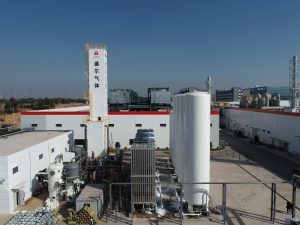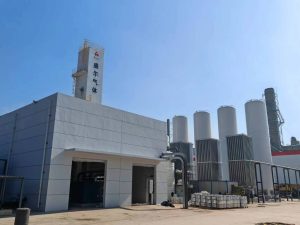盛爾氣體(香港)有限公司 Shenger Gas (Hong Kong) Co., Ltd.
深冷空分(Cryogenic Air Separation)係現代工業生產氧氣、氮氣、氬氣等高純度氣體嘅主要方法。佢透過將空氣喺極低溫環境下冷卻至液化,再利用各成分氣體沸點唔同嘅特性進行精餾分離。整個過程涉及多項關鍵設備,例如主換熱器、精餾塔、冷凝蒸發器同膨脹機,每個環節都影響最終氣體嘅純度同能耗。
Cryogenic air separation is the primary industrial method for producing high-purity oxygen, nitrogen, and argon. It works by cooling atmospheric air to extremely low temperatures until it liquefies, then separating the components based on their different boiling points. The process relies on several critical units — the main heat exchanger, distillation columns, condenser-evaporator, and expander — each of which determines the system’s overall efficiency and product purity.
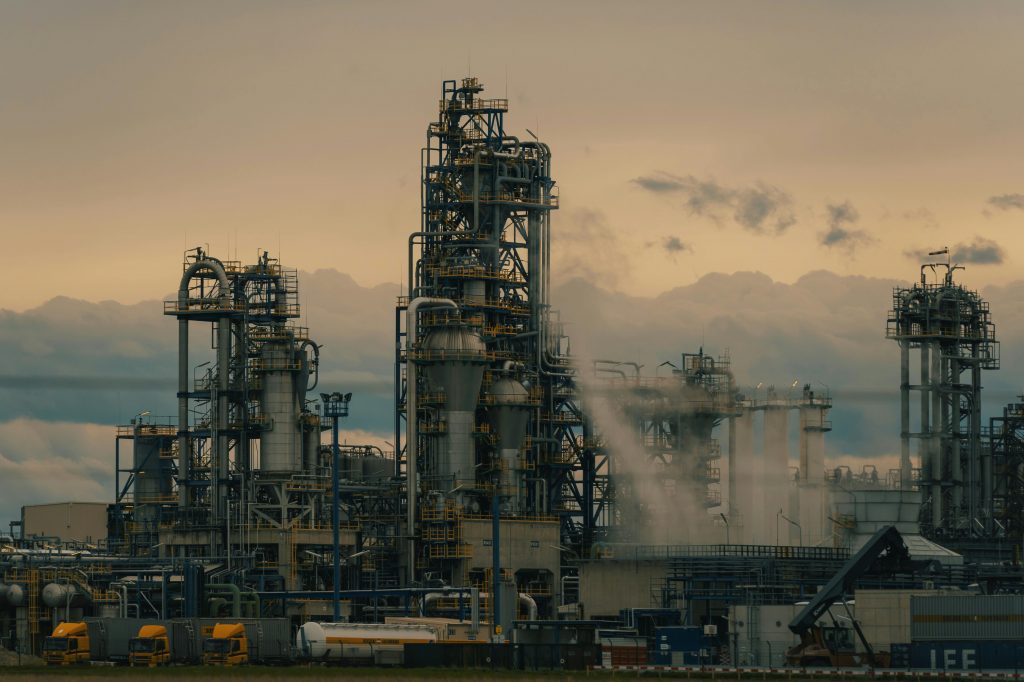
一、空氣預處理與壓縮(Air Compression and Purification)
空氣喺進入空分系統之前,首先會通過除塵器過濾,再由空壓機壓縮到大約 0.5~0.7MPa。壓縮後嘅空氣會經過冷卻器降溫,然後進入分子篩純化系統,去除水份、二氧化碳同碳氫化合物。呢一步非常重要,因為如果 CO₂ 同 H₂O 未完全去除,喺後續深冷階段會凝固成冰,導致管路堵塞。
Before entering the ASU, ambient air is first filtered through a dust separator and compressed to around 0.5–0.7 MPa. The compressed air is then cooled and passed through a molecular sieve purifier, which removes moisture, CO₂, and hydrocarbons. This purification stage is essential — residual water or CO₂ would freeze in the cryogenic section, blocking pipelines and damaging the equipment.
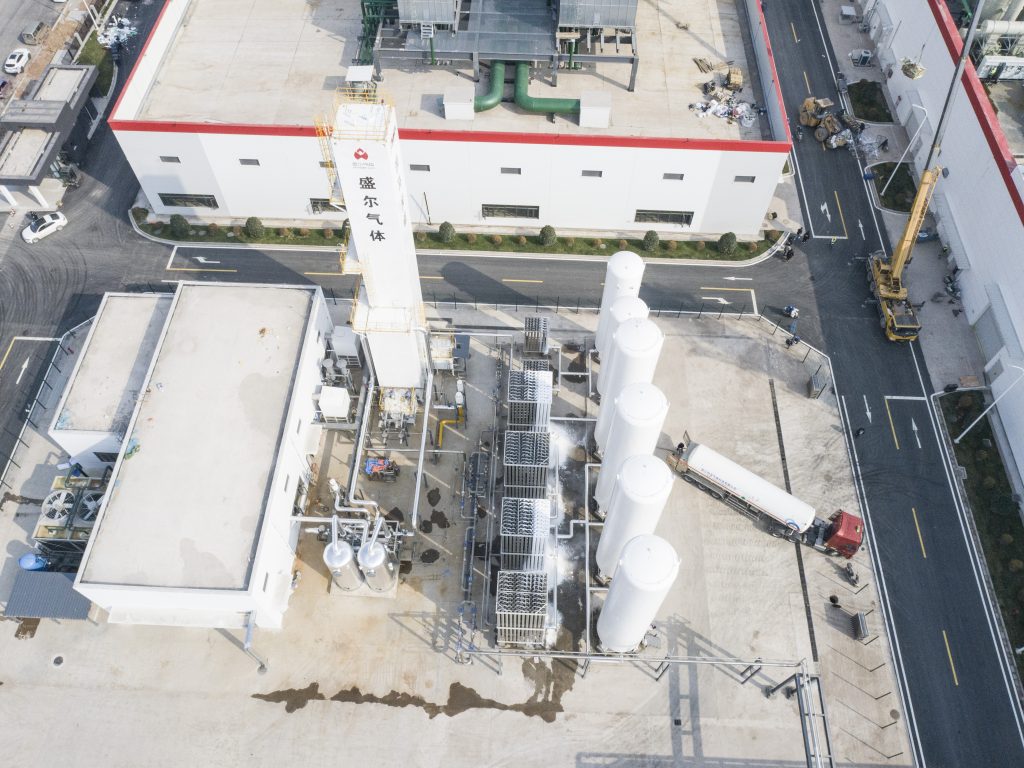
二、主換熱器冷卻過程(Main Heat Exchanger Cooling)
經過純化嘅壓縮空氣會被送入主換熱器,利用已經冷卻返嚟嘅污氮、氧氮混合氣體進行熱交換。喺呢個過程中,空氣溫度由常溫降至 -170℃ 左右,接近液化點。主換熱器既要保持高效傳熱,又要防止氣體冷凝結霜,因此其結構設計對整個系統能效影響極大。
The purified compressed air enters the main heat exchanger, where it exchanges heat with returning waste nitrogen and oxygen-nitrogen mixtures. The air temperature is reduced from ambient to around -170°C, near the liquefaction point. The exchanger must achieve efficient heat transfer while preventing icing or frost formation — its design directly impacts system efficiency and reliability.
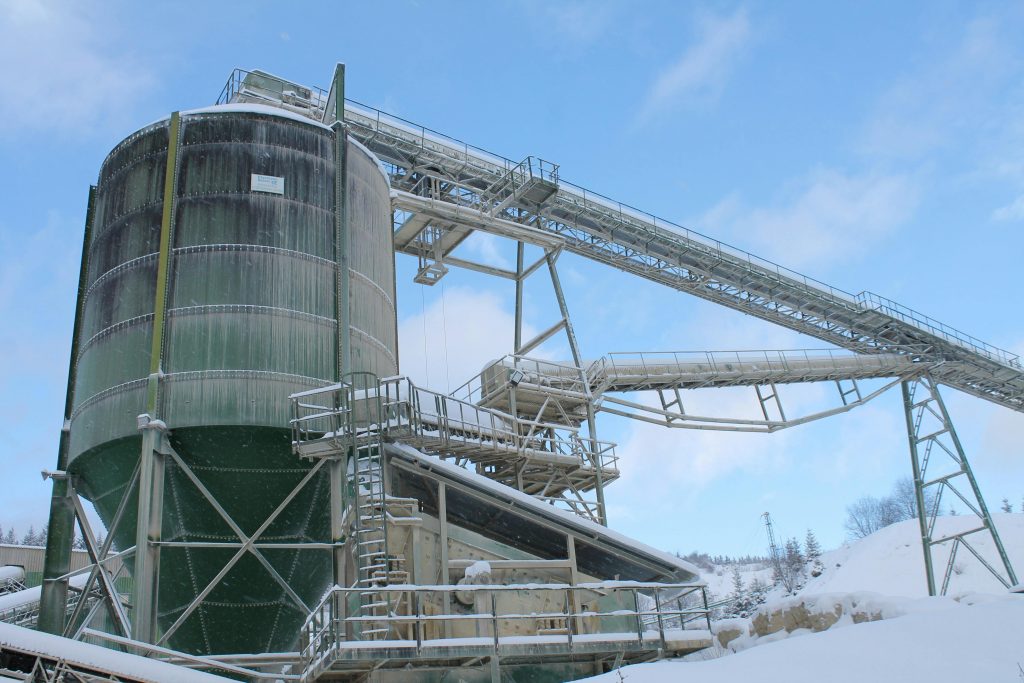
三、膨脹機產冷與液化(Expansion Cooling and Liquefaction)
為咗產生深冷所需嘅低溫,一部分空氣會送入膨脹機中進行絕熱膨脹。氣體壓力下降同時溫度急劇降低,釋放出冷量供整個系統使用。經過膨脹嘅空氣返回主換熱器冷端,為進入塔系統嘅氣體提供液化條件。膨脹機通常採用軸承式或氣懸浮結構,以確保穩定運行。
To generate the required refrigeration, part of the air stream is expanded adiabatically in an expander. The gas pressure drops sharply, producing significant cooling power that is distributed throughout the system. The expanded air then returns to the cold end of the main exchanger, precooling the incoming stream. Modern expanders use oil-free or gas-bearing designs for stable and maintenance-free operation.
四、精餾塔分離過程(Rectification and Distillation Columns)
液化嘅空氣進入精餾塔系統(一般包括高壓塔同低壓塔),利用氧氣(-183℃)同氮氣(-196℃)沸點差進行氣液平衡分離。上塔主要產出高純度氮氣,下塔產出液氧。部分液氮回流到高壓塔作為冷源,確保分離效果穩定。氬氣若需回收,通常會喺中間層設置氬精餾塔。
The liquefied air flows into the rectification column system, usually composed of a high-pressure column and a low-pressure column. Based on the boiling point difference between oxygen (-183°C) and nitrogen (-196°C), phase equilibrium separation occurs. The upper section yields high-purity nitrogen, while the bottom produces liquid oxygen. Part of the liquid nitrogen is refluxed to the high-pressure column to maintain stability. If argon recovery is required, a dedicated argon column is installed between the two stages.
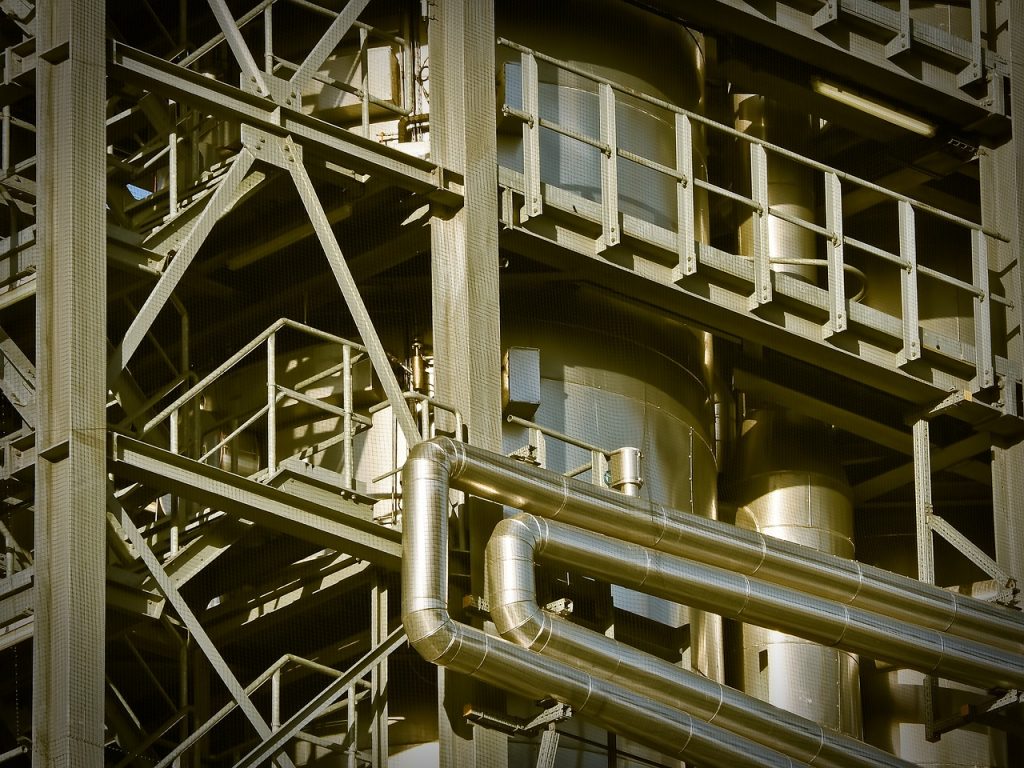
五、冷凝蒸發器的作用(Role of the Condenser-Evaporator)
冷凝蒸發器位於高壓塔與低壓塔之間,係深冷空分系統嘅「熱平衡核心」。高壓塔頂嘅氣氮放熱冷凝成液氮,同時將熱量傳畀低壓塔底嘅液氧,使其蒸發成氣氧。呢個雙向傳熱過程保持咗兩塔之間嘅熱動平衡,確保整個精餾系統穩定運行。
The condenser-evaporator, located between the high and low-pressure columns, is the thermal heart of the cryogenic system. Gaseous nitrogen from the high-pressure column condenses into liquid nitrogen, releasing heat to vaporize the liquid oxygen at the bottom of the low-pressure column. This bidirectional heat exchange maintains the system’s thermal balance and ensures steady-state operation.
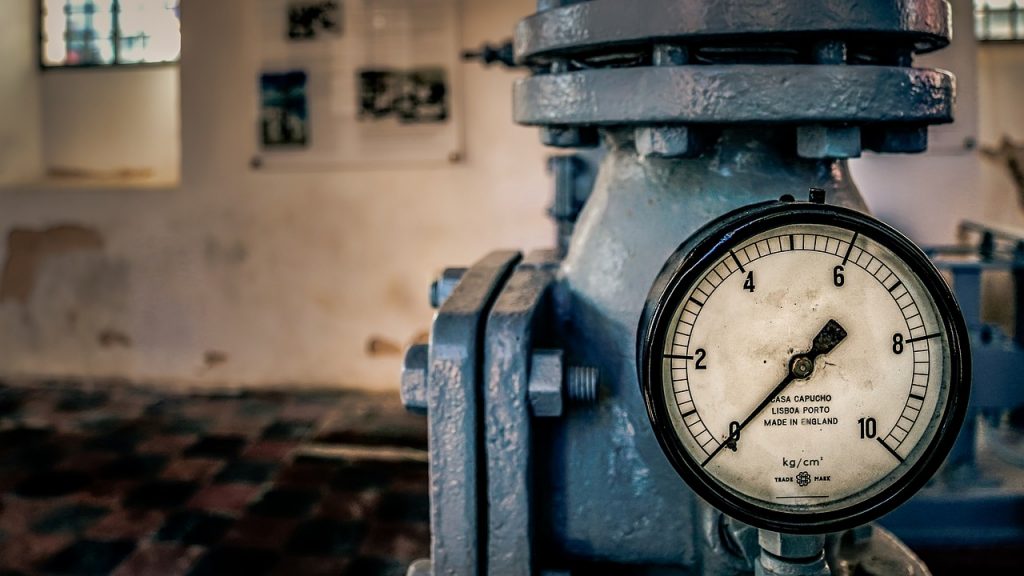
六、產品輸出與能效控制(Product Output and Energy Efficiency)
精餾完成後,液氮、液氧可根據客戶需求泵送成氣體產品供應,也可直接以液體形式貯存。現代深冷空分設備多採用 DCS 或 PLC 控制系統,實現壓力、流量、液位、純度自動監控。盛爾氣體(香港)有限公司喺系統節能設計上特別注重主換熱器壓差控制、膨脹機回收冷量同液氮回流比例,令整體能耗降低 10–15%。
After rectification, liquid nitrogen and liquid oxygen are either vaporized for gaseous supply or stored directly as cryogenic liquids. Modern ASUs use DCS or PLC automation for real-time monitoring of pressure, flow, liquid levels, and purity. Shenger Gas (Hong Kong) optimizes energy efficiency through precise heat exchanger differential control, expander cold recovery, and nitrogen reflux adjustment — achieving 10–15% lower power consumption compared with conventional systems.
七、深冷空分技術嘅應用價值(Applications and Industrial Value)
深冷空分技術廣泛應用於鋼鐵冶煉、化工、電子、能源、醫療、食品冷凍同光伏製造等領域。佢不單止係氧氣、氮氣生產嘅基礎技術,亦係國家工業基礎能力嘅象徵。隨著新能源產業發展,對高純氣體需求持續上升,深冷空分設備嘅效率與可靠性將成為企業競爭關鍵。
Cryogenic air separation is essential in steelmaking, petrochemicals, electronics, energy, healthcare, food processing, and photovoltaics. It not only underpins the production of oxygen and nitrogen but also represents a nation’s industrial capability. With the rise of new energy industries, demand for high-purity gases continues to grow, making ASU efficiency and reliability key factors for competitiveness.
結語(Conclusion)
深冷空分原理聽起嚟複雜,但本質就係透過低溫技術同物理分離原理,將「空氣」變成「工業資源」。盛爾氣體(香港)有限公司多年致力於深冷空分、制氮制氧及氣體純化系統嘅研發同EPC工程,為全球客戶提供高效、安全、節能嘅氣體解決方案。
Although technically complex, cryogenic air separation is fundamentally a process that turns ordinary air into valuable industrial resources through ultra-low temperature and phase separation. Shenger Gas (Hong Kong) has extensive experience in ASU engineering, nitrogen/oxygen generation, and gas purification, offering efficient, safe, and energy-saving gas solutions for global clients.


